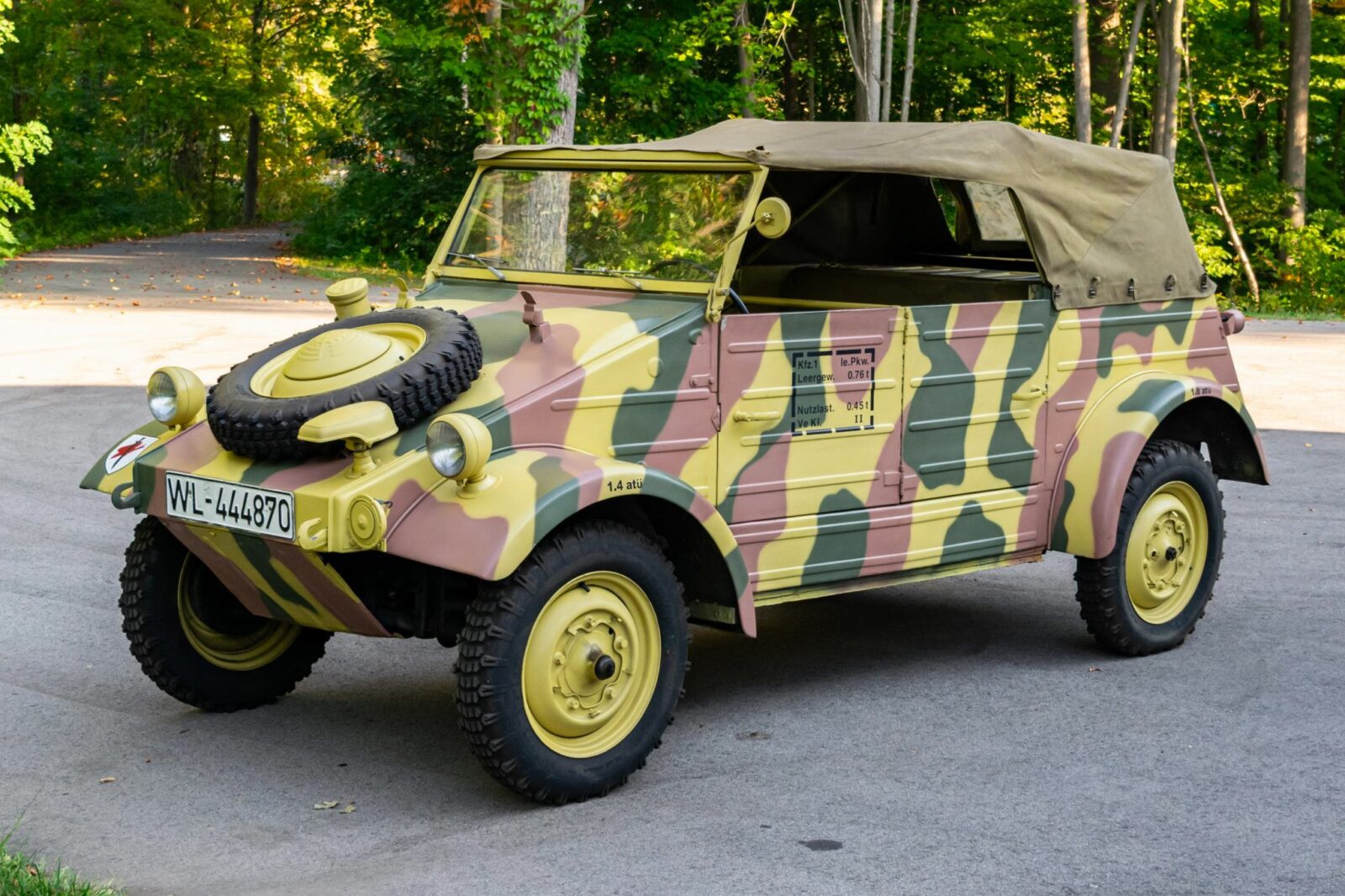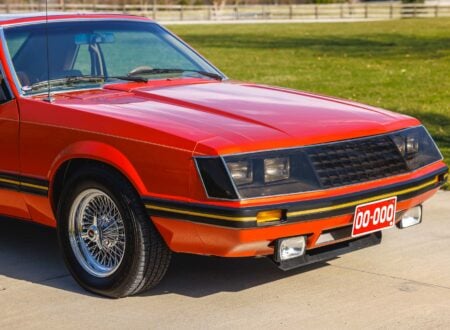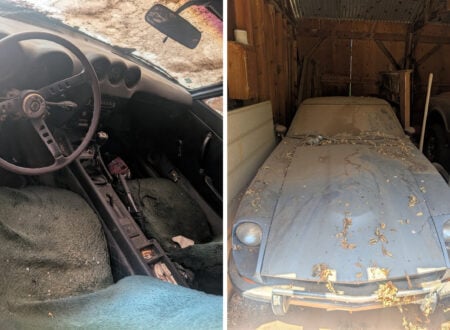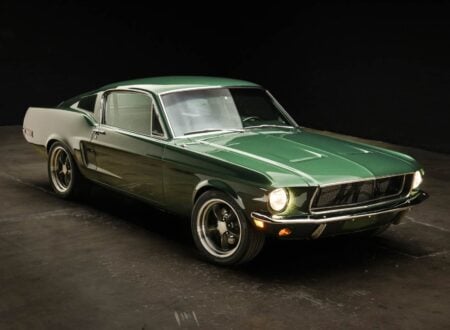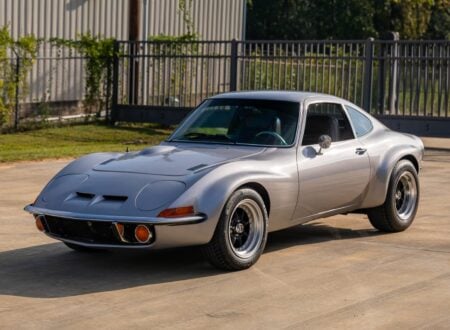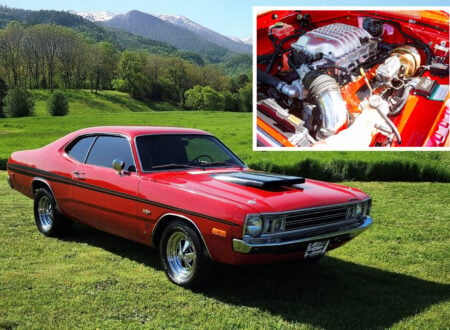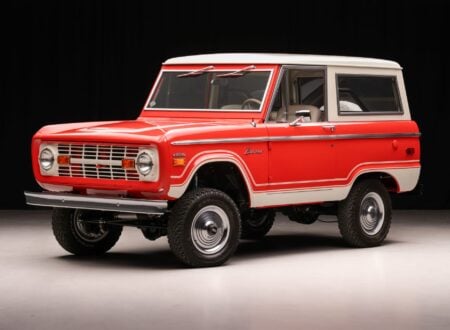This is a 1943 Volkswagen Kübelwagen that was used by Nazi Germany during WWII, essentially as a homegrown alternative to the Willys Jeep being fielded by the Americans.
The example you see here has been restored, and it made its way into the USA in the early 1970s where it has remained ever since. It’s powered by the more powerful 1.2 liter engine, as opposed to the earlier 1.0 liter flat-four, and it’s now being offered for sale out of Saugatuck, Michigan.
Fast Facts: The Volkswagen Kübelwagen
- The Volkswagen Type 82 Kübelwagen was Nazi Germany’s light military car, intended to answer the American Willys Jeep. Conceived by Ferdinand Porsche in 1938 from the Volkswagen KdF-Wagen, it entered production in 1940. Simple construction, low weight, and an air-cooled engine made it ideal for use across Europe, North Africa, and the Eastern Front.
- Early prototypes exposed weaknesses in a standard Beetle chassis, prompting a new reinforced floorpan, a flat underbody, and portal-type rear reduction hubs. The Type 82 launched with a 985cc flat-four with 23 bhp, later 1,131 cc at up to 25 bhp. With about 1,300 lbs unladen weight, a 4-speed, and roughly 50 mph capability, it returned near 30 mpg from a 40 liter tank.
- Variants remained visually familiar but specialized in function. The Type 82E paired a Beetle body with the Kübelwagen floorpan for officer transport. The all-wheel-drive Type 86 stayed experimental due to cost. The Type 166 Schwimmwagen became the notable amphibious offshoot. Allied testing praised economy and terrain effectiveness despite the absence of four-wheel drive.
- The 1943 example offered in Saugatuck, Michigan was refurbished in Germany in the 1960s, imported to the United States in 1972, and now rides on a 1959 Type 1 chassis with a later 1.2 liter engine and limited-slip transaxle. Features include Notek lights, folding windshield, canvas top, 16-inch wheels, and period-style tires, with historical documents and a California 1943 title.
History Speedrun: The Volkswagen Kübelwagen
Ferdinand Porsche was contracted in 1938 to adapt his Volkswagen “KdF-Wagen” into a light military vehicle, the result was the Type 62 prototype, soon refined into the Type 82 Kübelwagen. The name was shorthand for Kübelsitzwagen – “bucket seat car” – a term the German military had applied to open utility cars since the 1930s.
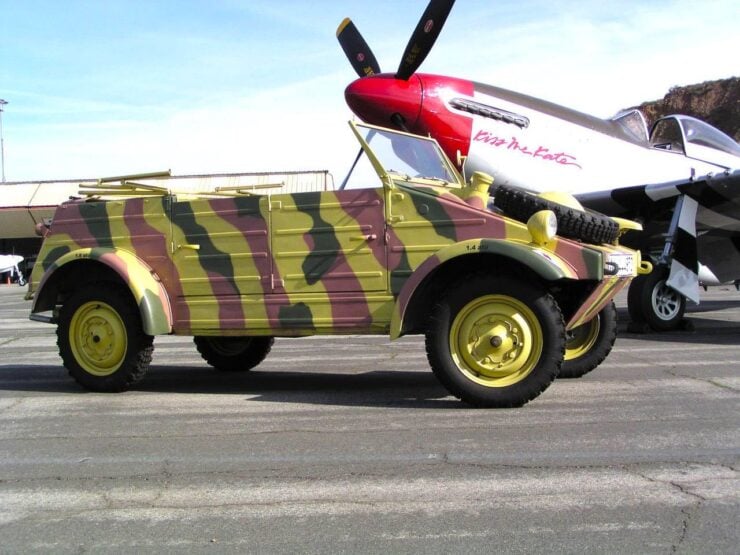

What emerged from Porsche’s drawing table was a uniquely German counterpart to the American Willys Jeep – light, simple, and field-reliable, yet shaped by Volkswagen’s rear-engined, rear-wheel drive layout.
The earliest prototypes used modified Beetle chassis, but testing in 1939 revealed that a conventional car platform lacked the strength or off-road ability required by the Wehrmacht. Porsche’s team revised the design with a stiffer floorpan, a flat underbody for sliding across deep mud and sand, and portal-type reduction gears in the rear hubs for better ground clearance and to improve torque at the wheels.
The result of all this was the Type 82, powered by the Volkswagen air-cooled four-cylinder with a 985cc displacement producing 23 bhp. Though modest even by the standards of the time, the low weight (around 1,300 lbs) gave it surprisingly good ability in rough terrain.
Production began in 1940 at the Volkswagenwerk in Wolfsburg, and over the course of the war some 50,000 examples were built. Their air-cooled engines proved invaluable in the deserts of North Africa and on the Eastern Front, where liquid-cooled vehicles often froze or succumbed to their own increased complexity.
Though the basic Kübelwagen shape remained relatively consistent, several variants appeared over time. The Type 82E combined the Beetle body with the Kübelwagen floorpan for more comfortable officer transport, and the all-wheel-drive Type 86 was tested but never mass-produced due to cost.
The most notable offshoot was the Type 166 Schwimmwagen, a fully amphibious version built in large numbers from 1942 onward. Command versions with radios, winter kits, and even ambulance adaptations were also deployed, though the vast majority remained simple troop and utility cars.
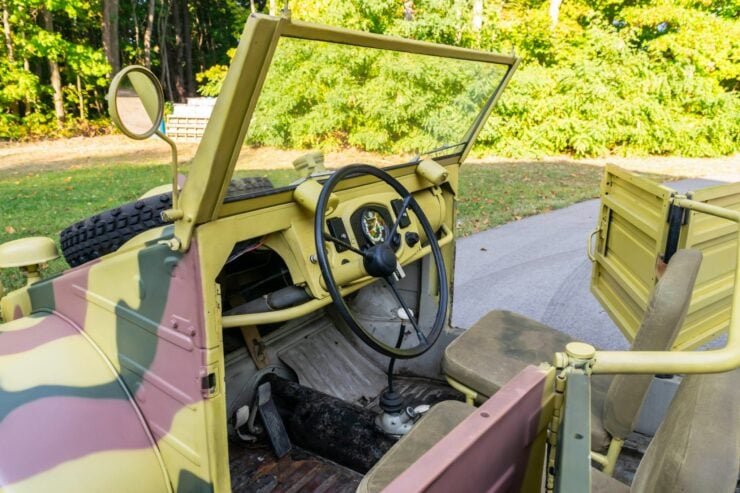

The Type 82 Kübelwagen had a 94.5 inch wheelbase with independent suspension at all four corners. Power came from Volkswagen’s flat-four, first in 985cc as mentioned higher up, this was later enlarged to 1,131 cc, producing between 23 and 25 bhp.
Power was sent through a 4-speed manual gearbox with optional low gearing. Unladen weight was around 1,300 lbs, and maximum speed was roughly 50 mph on road. Fuel consumption – 30 mpg in favorable conditions – was excellent compared to other military vehicles, giving the Kübelwagen long range from its 40 liter tank.
The Kübelwagen saw service on every German front, from France to Russia to North Africa. Its light weight let soldiers manhandle it out of mud or snow, and the flat panels and simple drivetrain made field repairs simple.
Allied intelligence noted its efficiency – captured examples were tested by the US Army and they were praised for their economy and effectiveness in varied terrain, even if they lacked the Jeep’s four-wheel drive.
By 1945, the Kübelwagen had become as closely associated with German forces as the Jeep was with the Allies. Photographs of Rommel’s Afrika Korps often show Kübelwagens in the background, and countless Wehrmacht formations relied on them as liaison, reconnaissance, and command cars.
After the war, production of the Kübelwagen ceased as Volkswagen transitioned into civilian Beetles under British supervision. Yet its influence lingered – surplus examples were used by Allied occupation forces and later filtered into civilian hands. In the 1960s Volkswagen revisited the concept with the Type 181 Thing a spiritual successor built on Beetle underpinnings and exported worldwide.
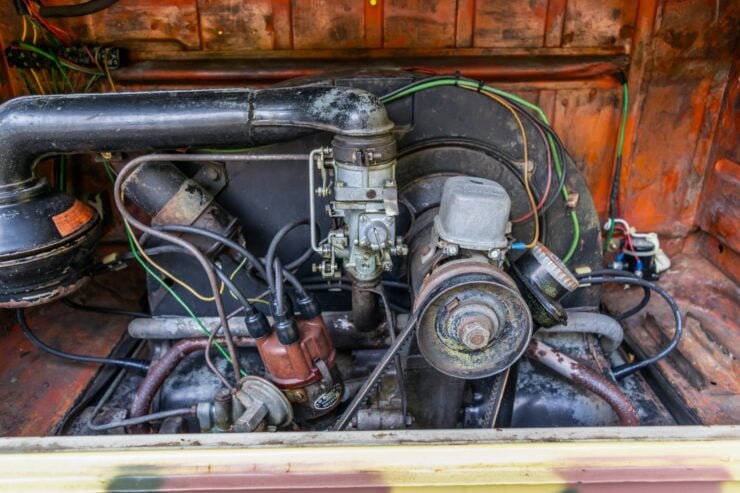

The 1943 Volkswagen Kübelwagen Shown Here
This 1943 Volkswagen Type 82 Kübelwagen is one of roughly 50,000 examples built for the German military during World War II. It was refurbished in Germany during the 1960s, then imported to the United States in 1972.
As part of that work, the body was mounted to a replacement chassis from a 1959 Volkswagen Type 1 and fitted with a later 1.2 liter air-cooled flat-four engine for some additional power.
This Kübelwagen is finished in yellow with brown and green camouflage, it retains many of its wartime design elements including a folding windshield, canvas soft top, and seat cushions accompany front and rear Notek blackout lights, a convoy light array, and fender-mounted headlights.
A spare wheel is mounted to the nose, while 16 inch yellow-painted steel wheels are shod with period-style DEKA Gelände Verstärkt tires. Mechanical details include independent torsion-bar suspension with pneumatic shocks, gear-reduction rear hubs for extra clearance, and hydraulic drum brakes.
Inside, the utilitarian layout is preserved with drab cloth-trimmed cushions on the front seats and rear bench. Storage compartments are located under the dash and behind the passenger compartment, and dual electric wipers operate independently.
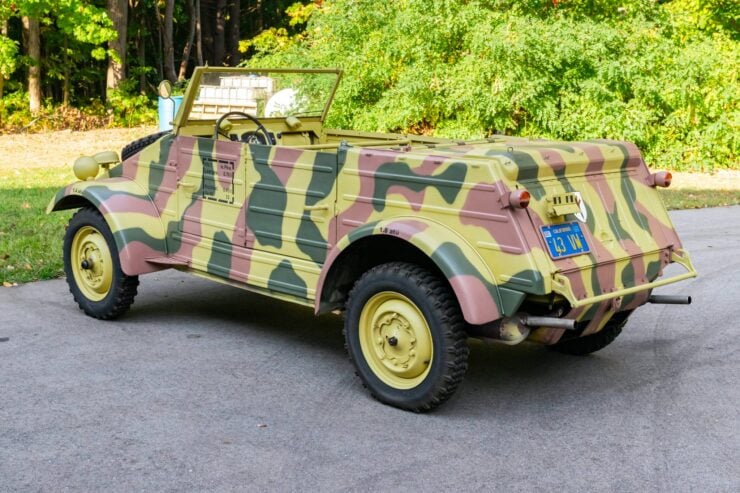

Power comes from the replacement 1.2 liter flat-four, fed by a Solex downdraft carburetor and paired with a 4-speed manual transaxle equipped with a limited-slip differential. The battery is located beneath the rear bench, and a collection of German-language documents accompanies the sale, including a 1946 release certificate referencing an engine consistent with a 1943 build.
It’s now being offered for sale out of Saugatuck, Michigan on Bring a Trailer with historical documents and a California title listing it as a 1943 Volkswagen. If you’d like to read more about it or register to bid you can visit the listing here.
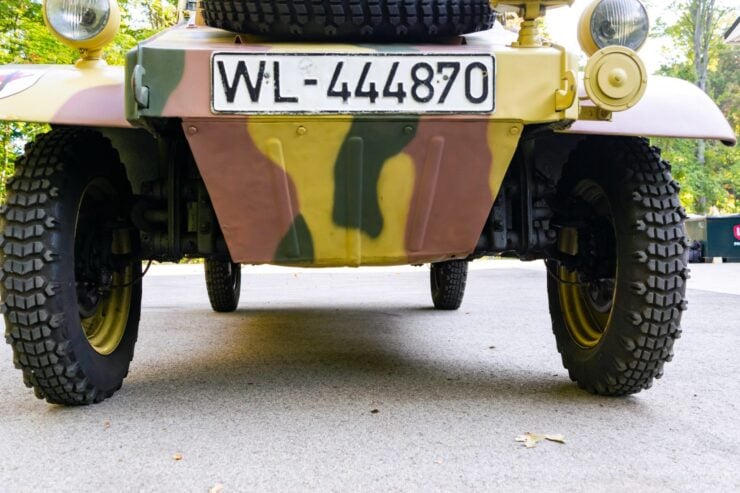
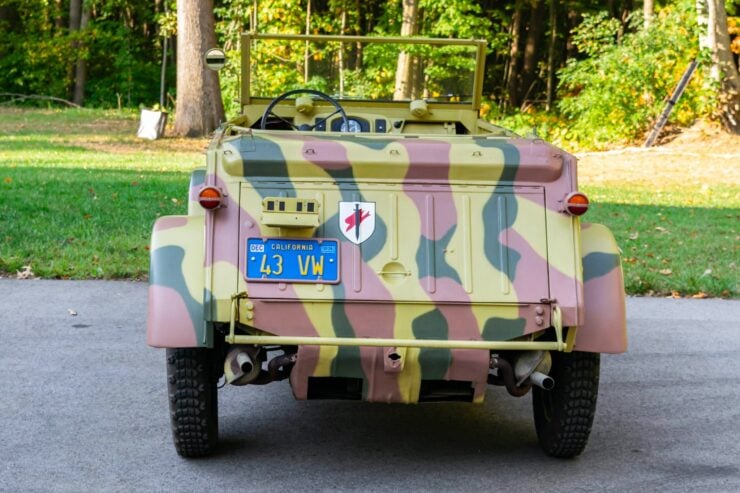
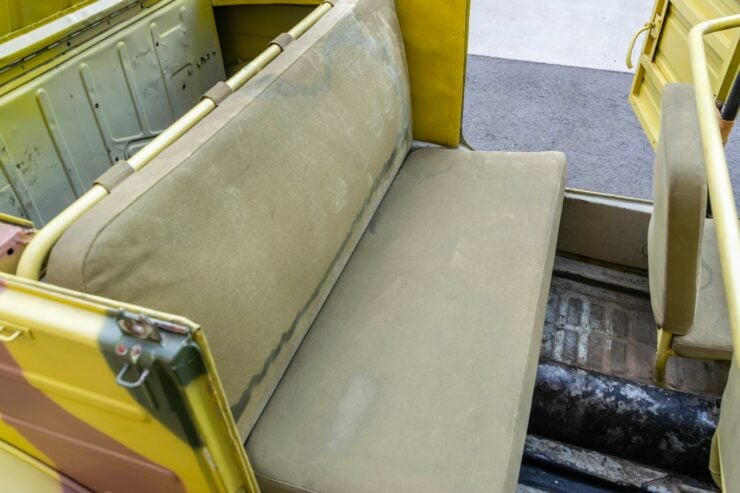
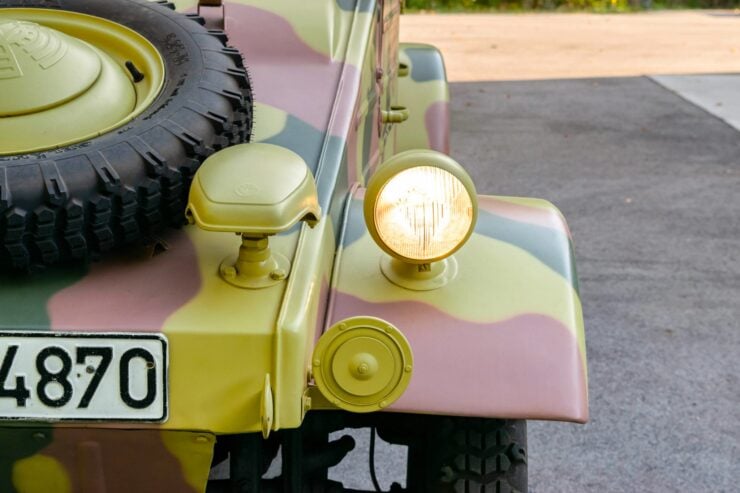
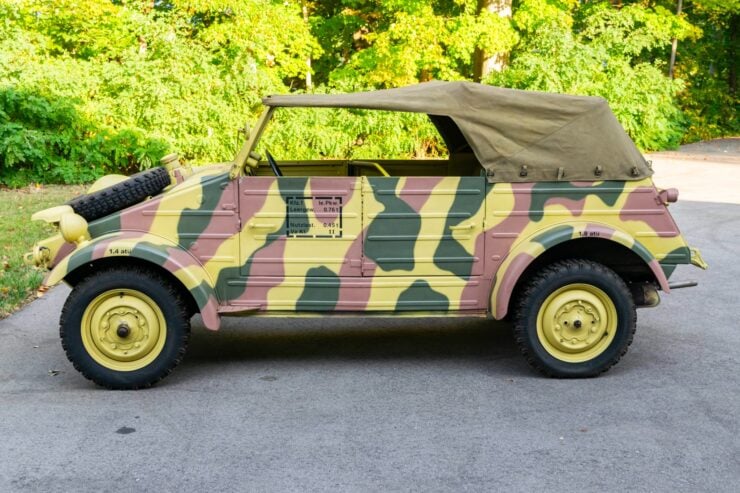
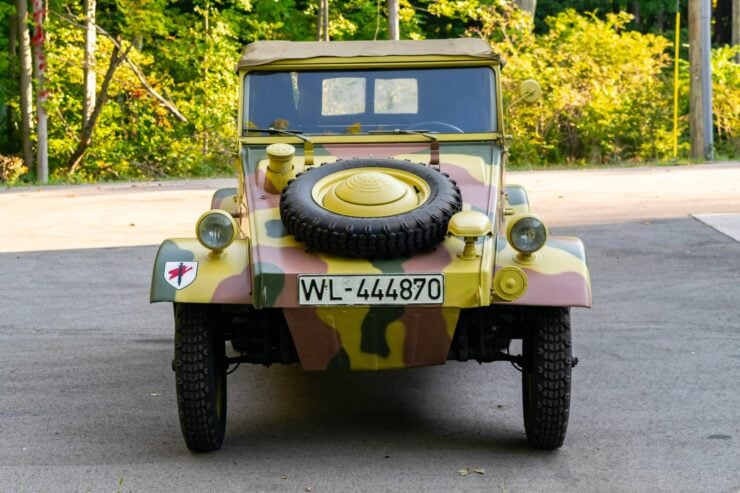
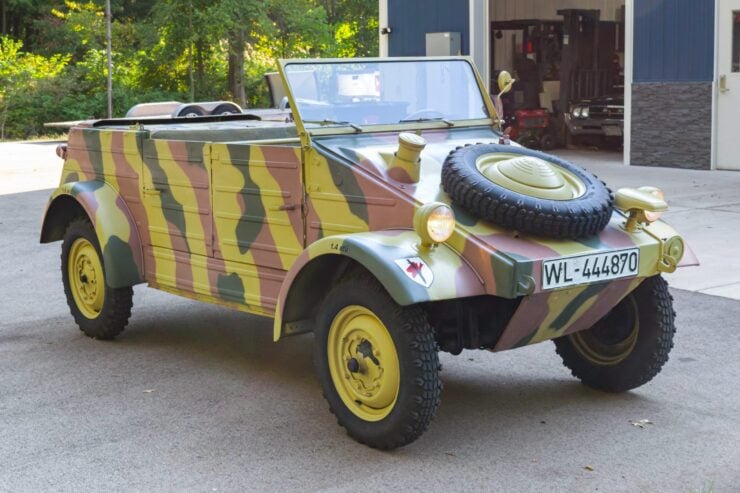
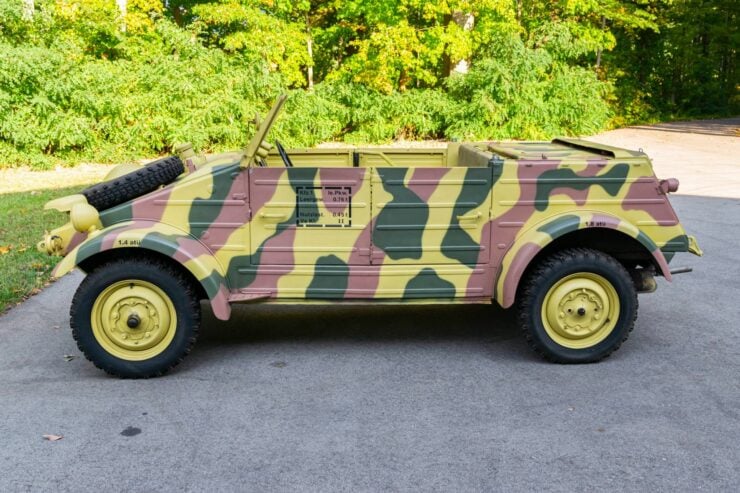
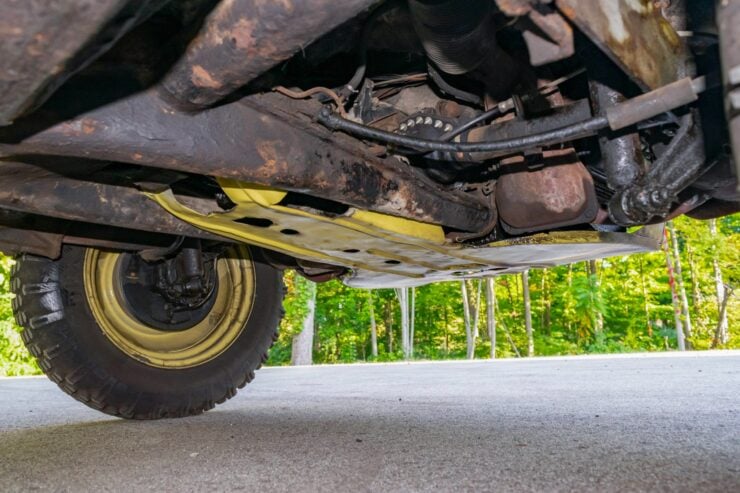
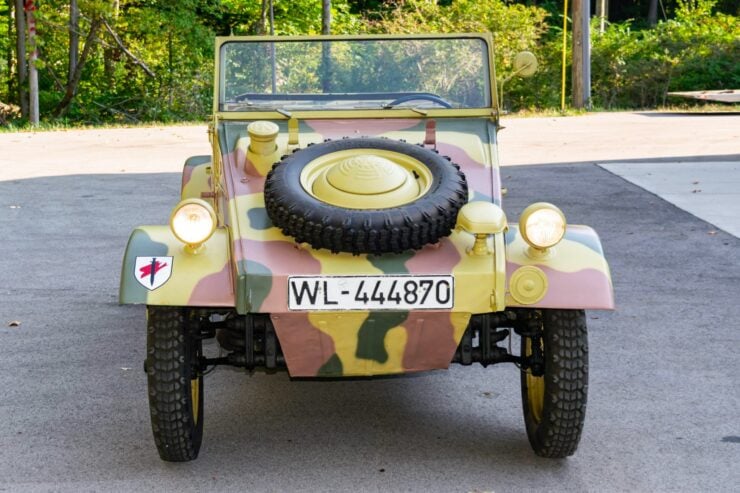
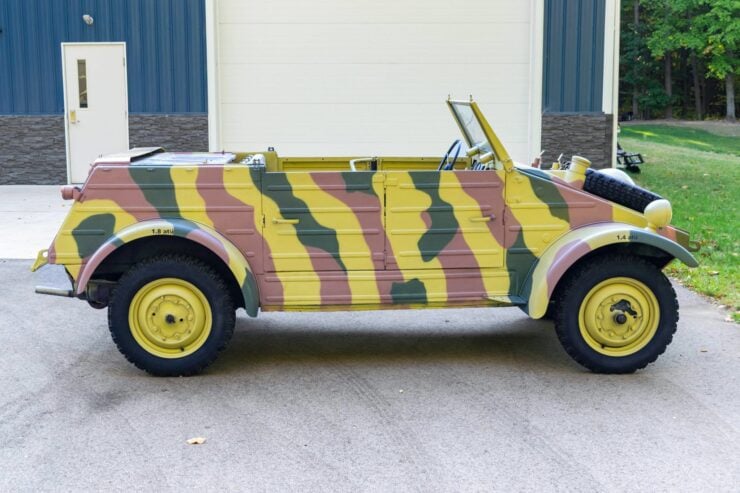
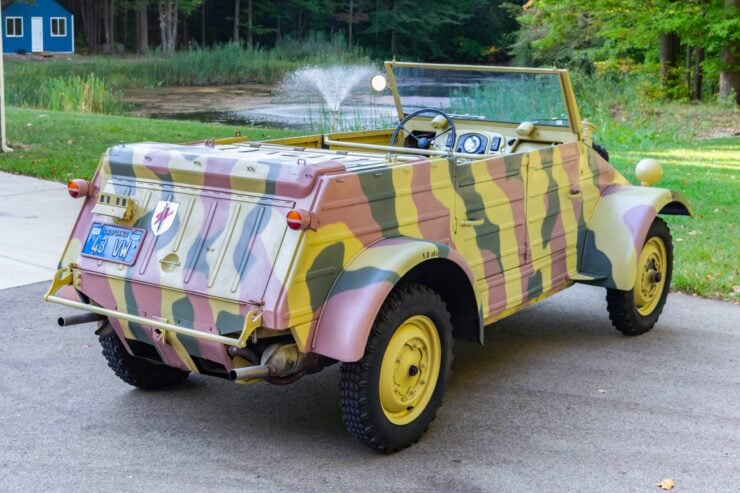
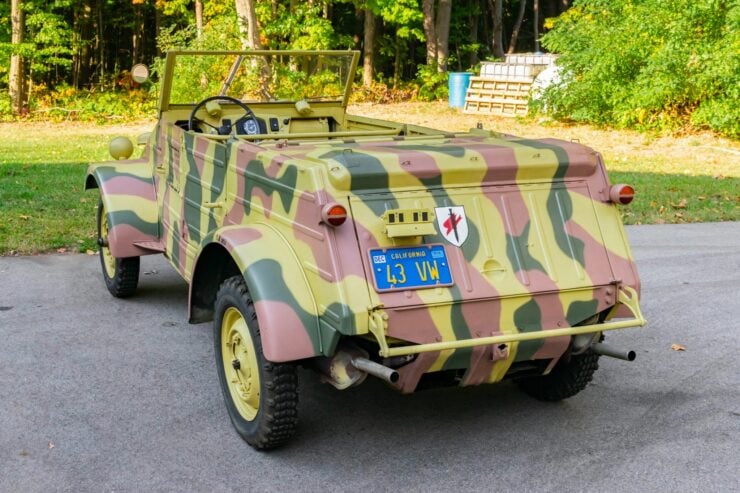
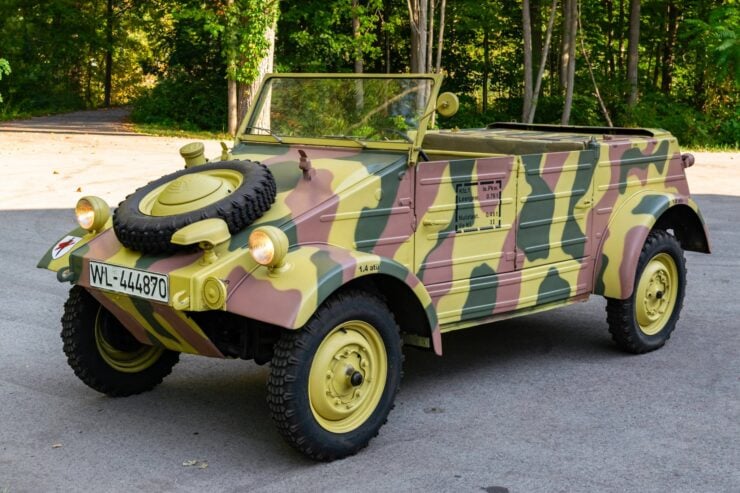
Images courtesy of Bring a Trailer

